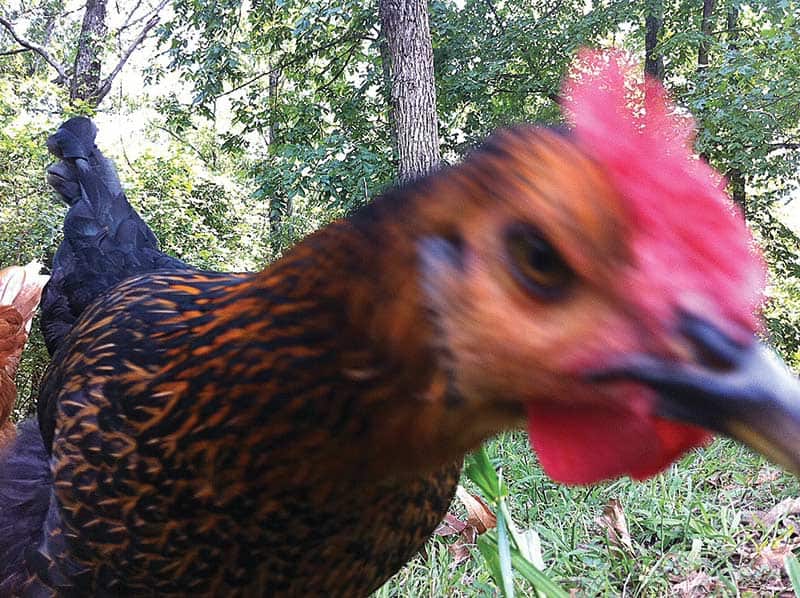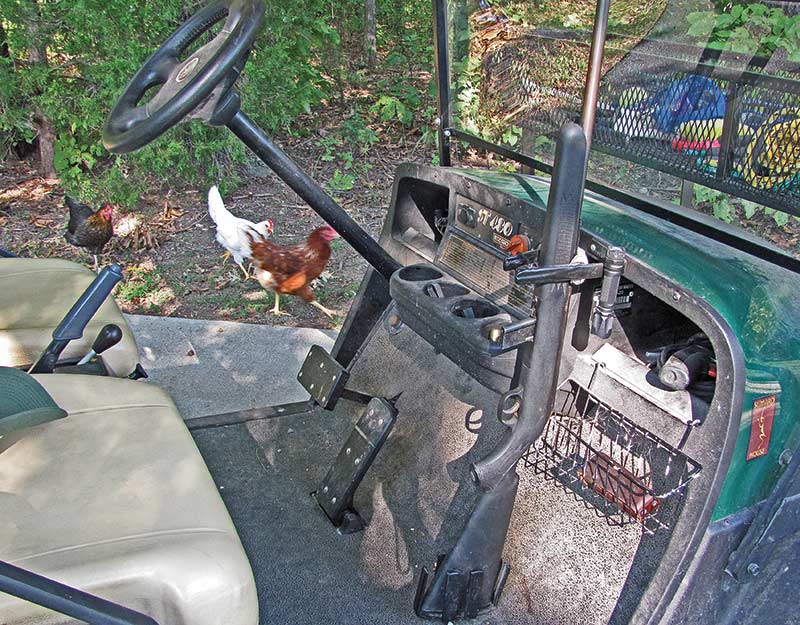Chicken Guns
Wait! It’s not what you think. Before everyone runs to their computers to send me e-mails telling me I’m a horrid, vicious murderer for shooting innocent chickens — rest easy, ‘cause I’m not. Well, at least usually I’m not.
A while back we thought it would be a good idea to raise some chickens. Soon there were nine chickens in residence. Our neighbor raised about 40, so they were kind enough to bring over a mini-flock, including one rooster. Now comes the part about not usually shooting chickens. Within 30 minutes that rooster had attacked most of the “girls” as we call them, pecked them, foisted himself “upon” them, tried to attack me and generally made himself unwelcome. I called my neighbor and encouraged him to take a “return” on the rooster. “Nope, he’s yours now,” came the reply. I heard a laugh too, I’m sure of it.
I tried to catch that damn rooster but that was a no-go, so for about 30 minutes he terrorized the girls and Jenna The Wonder Dog, all the while deftly avoiding my flailing at him with a hoe, steel rake and even a concrete block on one memorable run-by. I’d soon had enough and reached for my at-hand semi-rusty .22 rifle — problem solved. The girls settled down nicely, letting out chicken-sighs and coos of relief as if saying, “Thanks, glad he’s gone.” He was tasty for a rooster, by the way.
A bit later we added another 20 girls and now have eggs over-flowing. But life is hard when you’re a chicken and you live in the country, especially when you to free-range around the property. Which they certainly enjoy, with much pecking, scratching, fussing and eating of bugs and other tasty treats. An added benefit — no bugs around the house. Since we raised them from chicks, if you call to them (“Bwock, bwock … bwwocckkk!”) they hoist their skirts and come bounding over like a bunch of old ladies wearing bustles. Great fun. They also like watermelon, by the way.
But, all has not been chicken nirvana at the Huntington spread. Coyotes, hawks, raccoons, feral dogs, snakes and any number of other critters also like the fact we have chickens. Of the original eight “girls” there’s only one left. We call her “O.C.” for Original Chicken. All the other first-stringers have gotten eaten. We still have the 20 new ones though, mostly through vigilance on our part. A chicken-tip: If you decide to keep chickens and let ’em free-range — don’t name them. It’s bad enough when you lose one, but if you lose “Rosie” or “Zelda” or “Hawk” (a long story there), it’s suddenly personal.
When a coyote snatched Rosie (our favorite) right outside our kitchen window (Suzi was banging on the window and yelling, but it happened fast and she couldn’t do anything about it) — we officially declared war. Which brings us around to chicken guns.
Before we moved onto our land and were city-locked in Southern California, I spent more time than I probably should have trying to figure out the “perfect” land-gun. Something I’d always have with me and could protect us and our animals from those things we needed protection from. Once moved, I quickly found out what you “imagine” and what actually works can be two different things. What I learned is there isn’t a single gun that does it all — but one does come close. In my real world, the shotgun always managed to be someplace else when I needed it, my handgun wasn’t always the right one for the moment (I have a .44 Magnum at-hand when what I really need is a .22), and my lever-action .30-30 is, um … challenging, when you’re trying to connect on a coyote blasting 48 mph across the pasture. After stealing a chicken, by the way. I missed — all five shots.
Now, almost five years after moving here, I find myself just about always within reach of one kind of gun. While it’s not perfect, it does many things pretty darn good and is lightweight, very accurate, easy to feed and doesn’t cost an arm and a leg.
And the winner is? The not-so-lowly .22 rifle.
I keep one in a rack on our E-Z-Go chore vehicle (photo) and another strapped in a rack on the ATV. Another’s in my pick-up, and there’s one at the garage door, one downstairs in my office and one in the shop — all with empty chambers and loaded magazines. All are semi-autos, all are magazine-fed and all are either beaters I picked up at Brandon’s gun store, or inexpensive plinkers bought at retail at Wal-Mart or Academy.
While tube feeds work fine, they’re a pain if you chamber a round. To get an empty chamber again, you have to pull the follower, dump the rounds out of the tube, run the bolt to eject the chambered round and any others stuck, double check the chamber, drop the striker, load the tube and reinsert the follower again. A pain. With a magazine, you drop the mag, eject the chambered round, reload it into the mag, and snick the mag back into the gun. Simple.
In a pinch, an accurate .22 rifle can manage a coyote (or at least drive him off), can handle a feral dog, raccoon, ground-hog, field rat, pesky squirrel and can even be used for self-defense in a pinch. All of the ones I’ve scrounged or bought shoot under an inch at 25 yards, which is farther than we usually shoot them, and are easier to shoot accurately than any handgun.
We still keep “real” guns handy, but about 95 percent of the time problems get solved with a .22 rifle. I recently heard a “bap” from the living room door where it opens onto the deck. When I walked in, Suzi was just topping off the .22’s mag. “That damn squirrel that’s been tearing the bird feeder apart? Not anymore.” There you go.
While it makes perfect sense to have a good shotgun (a .410 is my second most-used gun), center-fire rifle and a cross-section of handguns to meet your needs, make sure you have a .22 semiauto rifle close at-hand. After all, the “girls” may need defending.
“Bwocckkkk …”





